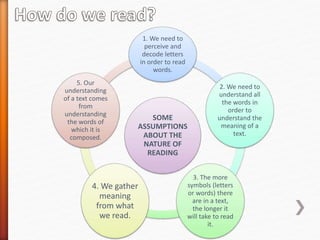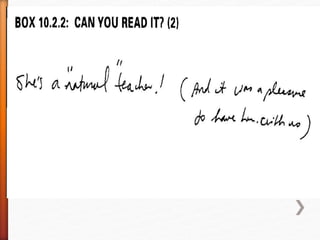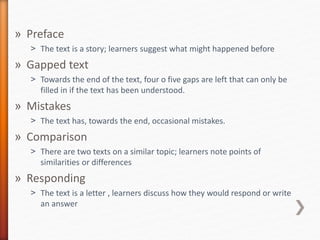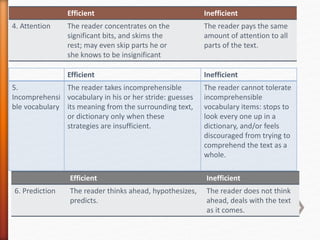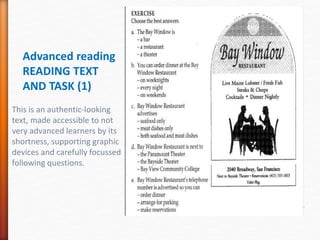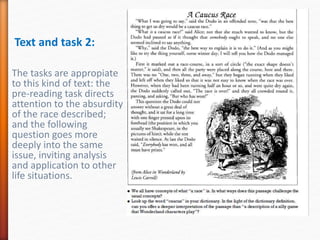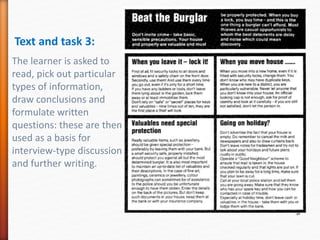The document discusses reading strategies and techniques for teaching reading. It provides assumptions about the nature of reading, including that readers need to understand some words to understand meaning and construct meaning from both bottom-up and top-down processes. It also outlines guidelines for beginning reading instruction, including starting with letters and their sounds before names. Various reading tasks and activities are proposed, such as pre-reading questions, summarizing, and representing the context through drawings or diagrams. Characteristics of efficient and inefficient reading are contrasted.


